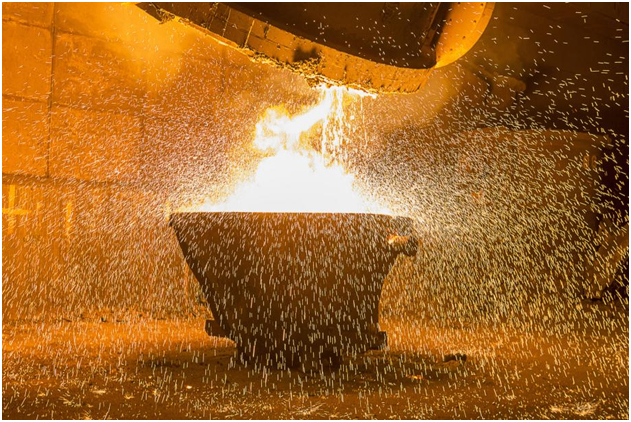The current market is in a weak balance of "low inventory, low prices, low demand, and high supply elasticity," with future trends hinging on the game between the intensity of production cuts and the speed of policy implementation. Assuming a 50-million-ton production reduction this year, annual crude steel output will stand at 955 million tons, with a cumulative reduction of 44 million tons from June to December—exceeding 7 million tons per month. The industry would shift from losses to profits, with gross profit per ton expected to recover to around 400 yuan. If actual production cuts are 20 million tons, annual output will reach 985 million tons, the industry will see a slight improvement, profits will expand marginally, and gross profit per ton could stabilize at 100–200 yuan. If output remains flat with last year, production will rebound in the second half of the year. Combined with expected export declines, oversupply will emerge, causing rapid profit deterioration and intensified involution.
Prices: Steel prices have trended downward since the start of the year amid severe involution, with the industry expecting strict production restrictions.
In H1 2025, steel prices fell significantly, driven by core contradictions including supply-demand mismatches, weakening cost support, and lagging policy effects. In Q1, construction steel consumption plummeted due to the Spring Festival off-season, low temperatures, and shrinking real estate demand. Coupled with cost collapses from falling iron ore and coke prices, steel prices continued to hit bottom. After April, policy expectations heated up (e.g., infrastructure stimulus, accelerated special bond issuance), triggering a phased rebound in construction steel, though the rebound was constrained by high supply pressure and blocked exports. The U.S. hike of steel tariffs to 50% and intensified anti-dumping investigations in Southeast Asia further escalated export pressures, while steel mills accelerated production resumptions after profit recoveries, leaving supply-demand imbalances unresolved. In June, steel prices entered a volatile phase, characterized by "weak reality, strong expectations": real demand was constrained by weak real estate and rainy-season construction disruptions, while policy expectations supported floor prices. If production reduction policies are loosely enforced, rebar and hot-rolled coils may dip below 3,000 yuan/ton, sustaining industry involution; if crude steel reduction policies are strictly implemented, infrastructure funds are accelerated, and coking coal price rebounds provide cost support, industry profits could recover in H2, boosting local tax revenues and preserving employment.
Image Source:699pic.com
Supply: Continuing crude steel production regulation and promoting "dual carbon emission control."
On May 23, 2024, the State Council issued the 2024–2025 Energy Conservation and Carbon Reduction Action Plan, stipulating strict implementation of steel capacity replacement, banning new steel capacity under the guise of mechanical processing, casting, ferroalloys, etc., and strictly preventing the resurgence of "rogue steel" capacity. Summarizing central and local policies, the steel industry's key development directions focus on three areas: (1) Sustaining crude steel production regulation and prohibiting new capacity under non-steel pretenses. (2) Vigorously developing high-end steel products like high-performance special steel, promoting scrap steel recycling, and supporting electric arc furnace short-process steelmaking. (3) Accelerating energy-saving and carbon-reduction transformations in the steel industry, and enhancing demonstration applications of low-carbon smelting technologies like hydrogen metallurgy. China is accelerating its transition through ultra-low emission retrofits (covering 80% of capacity by 2025) and the national carbon market mechanism. Steel was included in the national carbon market in 2024, with the first compliance period to be completed by end-2025. The "dual carbon emission control" (total volume + intensity) is being promoted to restrict new blast furnace capacity.
Demand: Steel usage in manufacturing continues to rise, approaching 50%.
In recent years, as China's economic structure adjusts, steel consumption in manufacturing has steadily increased to nearly 50%. Since the start of this year, traditional manufacturing has operated stably, while high-end manufacturing and strategic emerging industries—particularly new energy vehicles, wind power, photovoltaics, nuclear power, and shipbuilding—have thrived, with production and demand growing rapidly.
Profits: Strict production restrictions could restore profitability.
If production cuts are 20 million tons, annual output will be 985 million tons, industry gross profits will recover slightly, and gross profit per ton will remain at 100–200 yuan. If output stays unchanged from last year, production rebounds in H2 combined with export declines will lead to oversupply, sustained profit declines, and intensified involution.
The steel industry, a heavy-asset sector, faces structural issues like overcapacity. Currently dragged down by real estate demand, the steel market exhibits a trend of "falling supply, weak demand, rising inventory, dropping prices, shrinking revenues, and declining profits," posing significant challenges to enterprise operations. With the escalation of local wars, international uncertainties, exchange rate fluctuations, and trade protectionism/anti-dumping measures, export thresholds for Chinese steel enterprises will rise significantly. The deepened implementation of the new Environmental Protection Law, new pollutant emission standards, and heightened public environmental awareness have led to stricter environmental supervision and law enforcement for enterprises.

